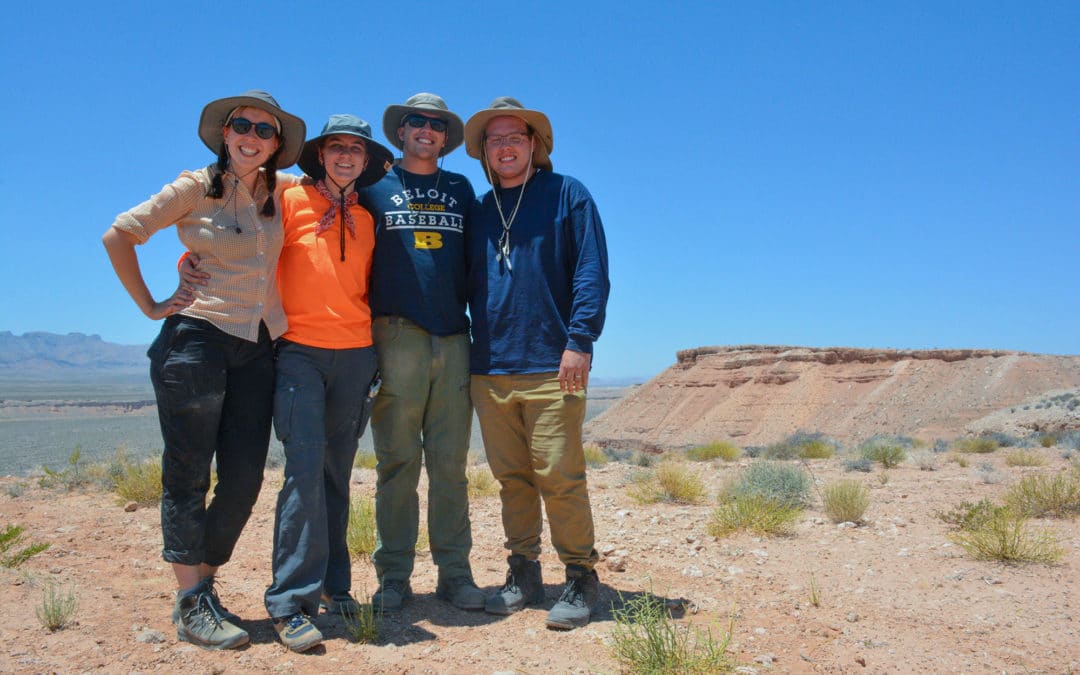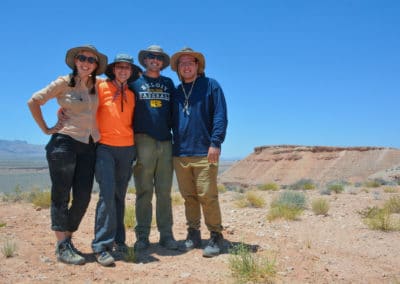Team Dirt in the field.
Submitted by Colin Robins (Claremont McKenna, Pitzer, and Scripps Colleges)
Team Dirt had an intense but wonderful summer getting started on their paleoenvironmental analysis of unique calcic and petrocalcic horizons in southern Nevada. Ethan Conley, Kurt Crandall, India Futterman, and Penelope Vorster worked with Colin Robins to measure sections, describe soil profiles, and collect soil and sediment samples from the 4 to 5 million-year-old soil geomorphic surface of Mormon Mesa and Flat Top Mesa, Nevada. Despite the 110-degree late-June desert heat and two rattlesnake encounters (one sidewinder and one Mojave green), the team collected over 150 samples and discovered two important new exposures. The new soil-stratigraphic sections will yield new resolution on Mormon Mesa’s geomorphic responses to climate shifts and tectonic events from the Pliocene to the Holocene. While most of Mormon Mesa shares one complex, composite soil profile, the two previously undiscovered sites at Flat Top Mesa exhibit younger, inset soil profiles developed within infilled arroyos that are now juxtaposed immediately adjacent to the older sequence. These younger profiles contain distinct micromorphological features and, critically for paleoclimate analyses, may have experienced fewer episodes of pedogenic carbonate dissolution and reprecipitation.
Having worked frenetically but carefully in Claremont to sort, crush, repackage, section, and ship samples back to their home institutions at Beloit, Mount Holyoke, Pitzer, and Vassar Colleges, the team is now beginning laboratory analyses including soil micromorphology and mineralogy, bulk geochemistry, and stable isotope geochemistry. The team will present preliminary data from these analyses as a joint poster at this year’s annual Geological Society of America Meetings in Indianapolis, Indiana.




